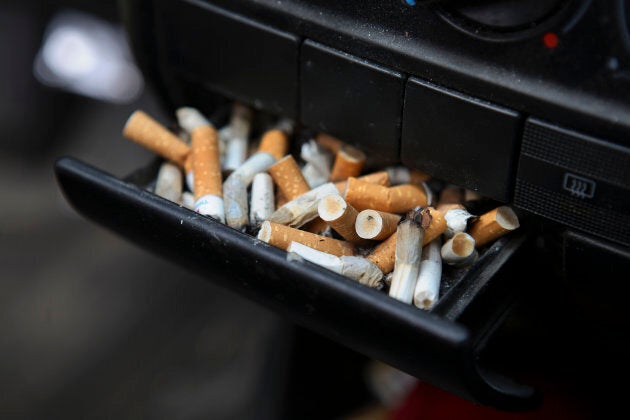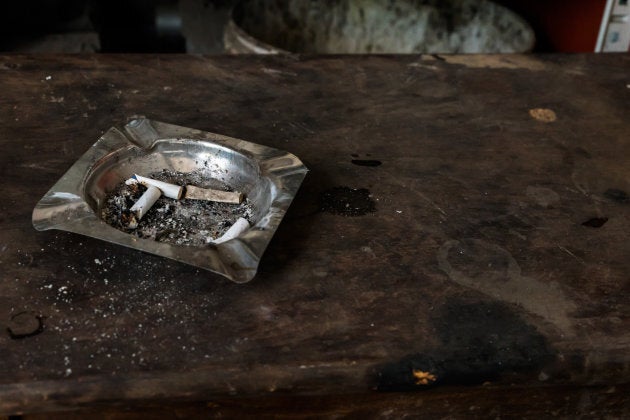Written by Bonnie Bristow, a radiation therapist and a member of Sunnybrook's Smoking Cessation Committee.
Patients and family members often ask me about second- and third-hand smoke because of my role as a radiation therapist and a member of Sunnybrook's Smoking Cessation team.
People are starting to be more aware of the impact second-hand smoke has on non-smokers and children. That's why the Smoke Free Ontario Act states that you can't smoke in your car if there's a child in it.
The effects of third-hand smoke — that's the build-up of a cigarette's contaminants on a surface — are still being studied. Here are answers to some of the frequently asked questions I get about third-hand smoke.

What is third-hand smoke?
When someone smokes, nicotine and other tobacco compounds accumulate on surfaces such as clothes, furniture, walls and vehicles, and can stay there several months after smoking has stopped, even after surfaces are washed. These residues are called third-hand smoke and contain toxic compounds, which have shown harmful effects on cells and animals in laboratory studies.
Smoke also clings to hair, fur, drapes, walls, bedding, carpets, dust, vehicles and other surfaces long after smoking has stopped. The residue builds up on surfaces over time. Third-hand smoke can't be eliminated by airing out rooms, opening windows, using fans or air conditioners, or confining smoking to only certain areas of a home.
Is third-hand smoke bad for my health (or my kids or my pet)?
If you are in a home where someone has smoked, or in a car where someone smokes (even days later) you will likely smell smoke. That's because compounds from the smoke sticks to surfaces. This residue is thought to react with common indoor pollutants to create a toxic mix including cancer-causing compounds, posing a potential health hazard to nonsmokers — especially children.
Studies suggest that exposure to third-hand smoke can have an impact on non-smoking adults and children when they inhale, swallow or touch objects that contain third-hand smoke.
Babies crawl on the floor and put things in their mouths (no matter how much we chase them and try to stop them!) This means they take in more dust than adults and in turn more third-hand smoke.
Pets lick third-hand smoke from their fur when they groom themselves. Same when birds pick through their feathers. This grooming adds to their cancer risk, especially for cats.
Exposure to third-hand smoke has been linked to liver, lung and skin problems.

What's something I can do as a non-smoker to reduce my contact with third-hand smoke?
Researchers are still studying all possible dangers but the only way to protect non-smokers is to create a smoke-free environment.
- Ask others not to smoke in your home or car.
- Remove all ashtrays, lighters, matches and smoking paraphernalia from inside your home. Clean out your car's ashtray and remove it or fill it with something else like candies or coins.
- Ask caregivers and babysitters not to smoke in your home and car.
- It can be difficult or uncomfortable to ask people visiting your home to smoke outside. You might want to tell them before they arrive that you have a smoke-free home. Most people are used to smoke-free environments. Give them a comfortable place to smoke outside and thank them for helping out.
What's something I can do as a smoker to be conscious of third-hand smoke risks to my friends and family?
- Wash your hands, brush your teeth or use mouthwash and change your clothes after having a cigarette.
- Don't smoke in your home or car or around family, friends or others especially when children are present.
- Realize that if you're not smoking in your home or car that
- The air will be fresher, cleaner and will smell better.
- You will be able to breathe easier.
- The chance of fire in your home will be lower.
- Your children will be less likely to smoke.
- Pets will be healthier.
- The resale value of your home and car may be greater.
- Your food will taste and smell better.
- Make a list of the reasons for your family to reduce smoke in your home and car.
- Set a date that you are going to reduce smoke in your home and car.
- Remove all ashtrays, lighters, matches and smoking paraphernalia from inside your home.
- Clean out your car's ashtray and remove it or fill it with something else like candies or coins.
- If you cannot go outside to smoke, the best place to smoke is in the bathroom with window open.
- The worst place to smoke in your home is in the basement
- Don't smoke outside near windows, doors or vents.
Resources:
Read more about living healthy from Sunnybrook experts at health.sunnybrook.ca
Follow HuffPost Canada Blogs on Facebook
Also on HuffPost: